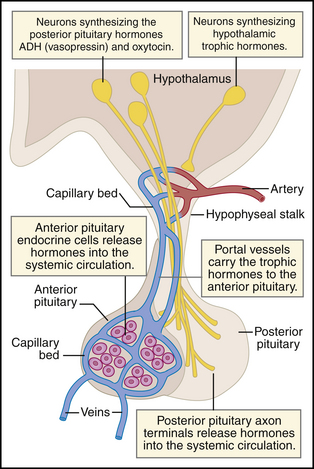76 CASE 76
A 28-year-old woman complains to her obstetrician of amenorrhea and milk discharge from her nipples.
PATHOPHYSIOLOGY OF KEY SYMPTOMS
The pituitary gland is a mixed neuronal and endocrine structure that is connected to the hypothalamus by the hypophyseal stalk (Fig. 76-1). The posterior pituitary is neural in origin and secretes the hormones oxytocin and antidiuretic hormone (ADH, vasopressin). The cell bodies synthesizing these hormones are in the supraoptic and paraventricular nuclei of the hypothalamus. The anterior pituitary is a glandular tissue that secretes six physiologically important hormones: adrenocorticotropic hormone (ACTH), follicle-stimulating hormone (FSH), growth hormone (GH), luteinizing hormone (LH), prolactin, and thyroid-stimulating hormone (TSH). Pituitary gland secretions control metabolism, reproduction, growth, and fluid balance. Consequently, the pituitary is often referred to as the master gland.
< div class='tao-gold-member'>
Stay updated, free articles. Join our Telegram channel

Full access? Get Clinical Tree



